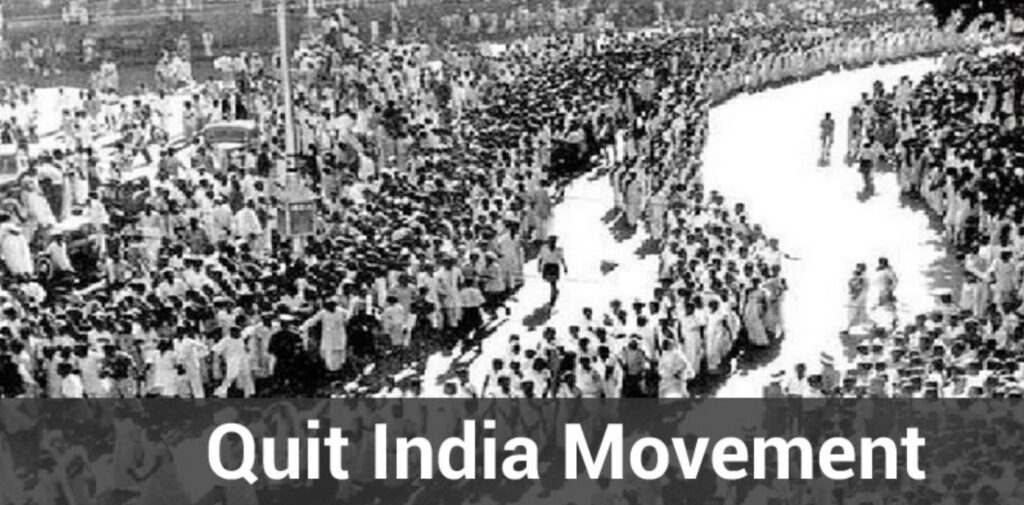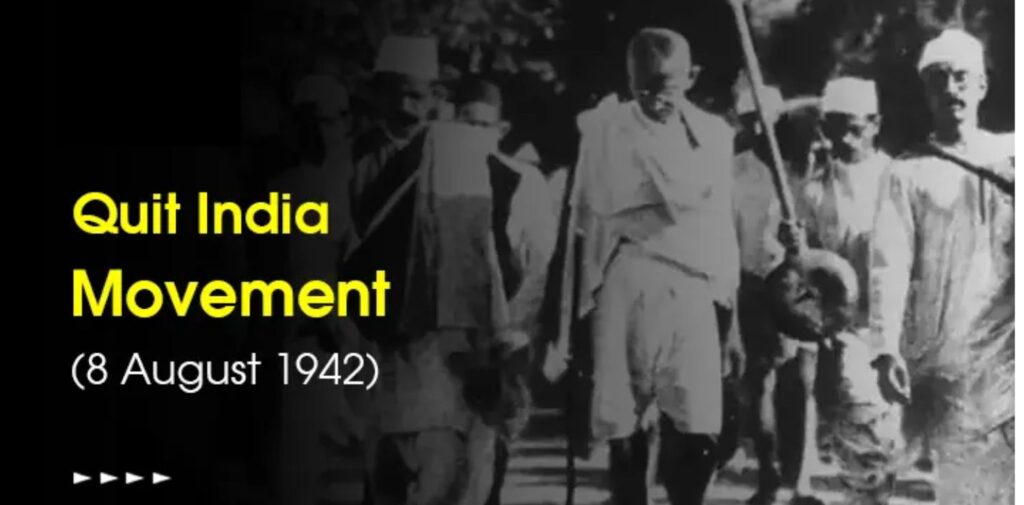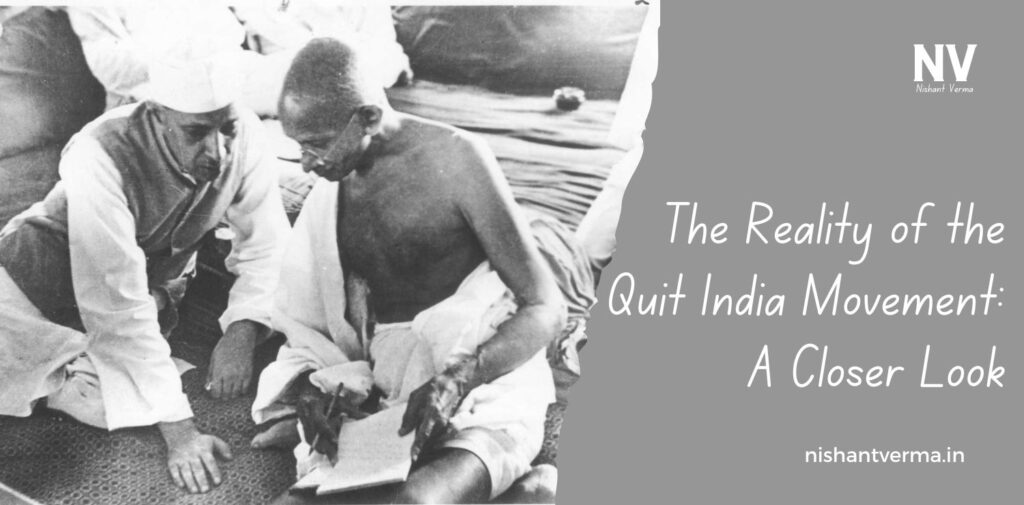The Quit India Movement of 1942 is often viewed as a pivotal moment in India’s struggle for independence. Led by Mahatma Gandhi and the Indian National Congress, this movement called for an end to British rule in India. However, the narrative surrounding this movement has been the subject of debate. Some argue that the historical significance and contributions of various groups and leaders have been downplayed, while the Congress party, especially the Gandhi-Nehru leadership, has been highlighted as the primary force behind India’s independence. In this article, we will explore the realities of the Quit India Movement and the context of British withdrawal from India, shedding light on multiple perspectives.
The Context of the Quit India Movement
To understand the Quit India Movement, we must first consider the political and social context of India in the early 20th century. The British colonial rule had been in place for nearly two centuries, leading to widespread discontent among Indians. The economic exploitation, famines, and social injustices fueled resentment against the British government.

By the 1940s, World War II had also created a unique situation. The British were heavily engaged in the war, and their resources were stretched thin. The Indian National Congress had already been pushing for greater self-rule since the 1910s, but the British response was often dismissive. The Congress was determined to seize the moment during the war to demand complete independence.
The Launch of the Movement
On August 8, 1942, during the All India Congress Committee meeting in Bombay, Gandhi called for the British to “Quit India.” He urged Indians to take to the streets in a non-violent protest against colonial rule. The slogan “Do or Die” became synonymous with the movement. The Congress leaders were arrested almost immediately, and this sparked widespread protests across the country.
While Gandhi’s leadership is often credited for galvanizing the masses, it’s essential to recognize that many other groups and leaders were also fighting for independence. The Indian National Congress was not the only organization advocating for freedom. Groups like the Indian National Army (INA), led by Subhas Chandra Bose, and various peasant and worker movements were also making significant contributions to the struggle against British rule.

Diverse Voices in the Struggle
The Quit India Movement was a broad-based initiative that included not just Congress supporters but also students, labor unions, and women’s groups. Various regions in India, from urban centers to rural villages, participated in protests. The movement’s grassroots nature demonstrated that the desire for independence was widespread and not solely the result of Congress’s efforts.
Moreover, the narrative that places Gandhi and the Congress as the sole architects of independence overlooks the contributions of other leaders and factions. While Gandhi emphasized non-violence, other groups believed in armed resistance, leading to different strategies in the fight for freedom.
The British Response
The British response to the Quit India Movement was harsh and repressive. Troops were deployed to quell protests, and thousands of activists were arrested. The violence and chaos that ensued led to severe crackdowns on dissent. Despite this, the movement showcased the determination of the Indian people and further strained British resources.
Interestingly, the Quit India Movement did not lead to immediate concessions from the British. However, it intensified discussions about India’s future, as the British realized that they could no longer maintain control over a country that was united in its desire for independence.
Factors Leading to British Withdrawal
Several factors contributed to the eventual British decision to leave India, and the Quit India Movement was just one piece of a complex puzzle:
- World War II Impact: The financial and military strains of World War II weakened British control. By the end of the war, the British economy was in shambles, and maintaining an empire became increasingly untenable.
- Global Context: The post-war world was moving towards decolonization. Countries worldwide were fighting for independence, and international pressure was mounting on colonial powers to grant self-rule.
- Rise of Nationalism: The Quit India Movement, alongside other nationalistic movements, demonstrated the strength of Indian nationalism. The British realized that any attempt to maintain control would lead to further conflict.
- Internal Divisions: The British faced internal challenges, including dissent from within their ranks and the growing strength of alternative political factions like the Muslim League, which was demanding a separate state for Muslims.

Reevaluating Historical Narratives
The narrative that positions the Indian National Congress, particularly Gandhi and Nehru, as the primary drivers of India’s independence can overshadow the contributions of many other leaders and movements. While the Congress played a significant role, it’s crucial to acknowledge the diverse array of voices and actions that collectively challenged British rule.
Additionally, it is essential to critically evaluate how history is recorded and taught. The glorification of a few leaders often simplifies a complex struggle and undermines the contributions of many. Recognizing the multitude of efforts allows for a more inclusive understanding of India’s path to independence.
Conclusion: The Quit India Movement
The Quit India Movement remains a significant chapter in India’s struggle for independence, symbolizing the collective desire of millions to end British rule. However, the simplistic narrative that credits this achievement solely to the Indian National Congress and its leaders neglects the broader context of resistance and the diverse contributions of various groups and individuals.
Understanding the reality of the Quit India Movement means recognizing the complexities of India’s independence struggle and the many paths that led to the British departure. The freedom movement was not just about one organization or a few leaders; it was about a nation rising together to reclaim its sovereignty. As we reflect on this history, it’s crucial to honor all those who fought for India’s freedom, ensuring that their stories and sacrifices are not lost in the annals of time.




